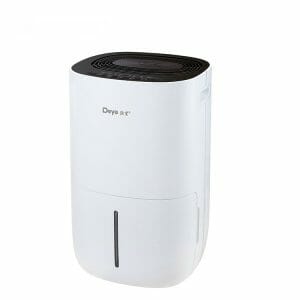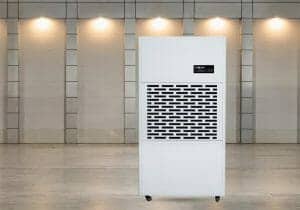
If you’re considering the switch to renewable energy to power your RV, solar power can be a practical solution for running your air conditioning system. Embracing solar energy not only aligns with eco-friendly practices but also enhances your freedom on the road.
Here’s what you need to know about how to use solar power to run your RV air conditioner.
Components of a Solar-Powered AC System
When outfitting your RV with a solar-powered air conditioning system, each component plays a pivotal role in ensuring efficient operation under the sun’s power. Let’s walk through the pieces that make up the system.
Solar Panels
Your solar array is crucial, as it’s responsible for capturing sunlight and converting it into usable energy. You’ll need high-efficiency solar panels to maximize energy production, especially since air conditioners have high power demands. Typically, an RV air conditioning system might require panels totaling between 300 to 800 watts, depending on your air conditioner’s BTU rating and your expected usage.
Battery Bank
This component stores the electricity generated by your solar panels. There are various types of batteries you can use, like lead acid, AGM (absorbent glass mat), and lithium batteries. Lithium-ion batteries are preferred due to their longer life span and higher energy density. The size of the battery bank is often measured in amp hours (Ah) and should be matched to your system’s wattage and the amp draw of your air conditioner.
Inverter
The inverter’s job is to convert the DC electricity produced by your solar panels and stored in your battery bank into AC electricity that your air conditioner can use. Ensure the inverter’s wattage rating matches or exceeds the wattage of your RV air conditioning unit. A soft start feature can be beneficial as it reduces the initial power draw when the air conditioner starts up.
Charge Controller
A solar charge controller regulates the flow of electricity from the solar panels to the battery bank, protecting the batteries from being overcharged. It’s a critical safety feature that also helps maximize the life of your battery bank by preventing over-discharge.
Air Conditioner Unit
The RV air conditioner unit has a compressor which should have a suitable BTU rating to effectively cool your space. Solar-powered AC systems might work with traditional units or be designed specifically for solar applications. Consider units with a soft start mechanism to lower the surge demands on the system.
Additional Components
Alongside the main components, your system may include an electrical panel for safely distributing electricity, various switches, and a monitoring system to keep track of how much power your solar panels are producing and how much is being consumed by the air conditioner.
Choosing the Right Solar AC System for Your RV

Selecting the ideal solar AC system for your RV involves understanding key specifications and accurately calculating your energy needs. It’s a balance between available space, power requirements, and investment in suitable hardware.
Important Specifications
When assessing solar power systems for RV air conditioners, you’ll need to focus on a few specific parameters:
- BTU (British Thermal Units): This measures the cooling capacity of your air conditioner. Typical RV air conditioners range from 11,000 to 15,000 BTUs.
- Wattage: Solar panel outputs are measured in watts. You’ll need panels that can supply enough watts of solar to meet or exceed the draw of your AC unit when in use.
- Battery Storage: Your RV will likely need a battery bank capable of storing the electricity generated by the solar panels. The capacity is often indicated in kilowatt-hours (kWh).
Space on RV: The size of your RV’s roof will dictate how many solar panels you can install. More panels mean more power, but you’ll need to manage the space efficiently.
Calculating Energy Needs to Run RV Air Conditioner
To determine the size of the solar power system needed for your RV air conditioner, here’s a simplified step-by-step process:
- Determine the running watts: Check the AC unit’s manual or data plate to find its power consumption, often listed in watts.
- Calculate the daily energy usage: Estimate how many hours per day you run the AC and multiply by the running watts to get watt-hours (Wh).
- Estimate system requirements: Solar panels and batteries should be sized to match your daily Wh consumption, ensuring also to cover inefficiencies and potential power losses.
Remember, exact calculations will depend on specific models and usage patterns, but here’s an example for a 13,500 BTU RV air conditioner, which typically draws about 1,500 watts:
- Running for 5 hours a day: 1,500 watts * 5 hours = 7,500 Wh/day.
- Sizing solar panels: Aim for a total panel wattage that can generate your Wh needs, considering only 5-6 hours of effective sunlight per day.
- Sizing batteries: Look for a battery bank that can store at least 7,500 Wh, but preferably more to accommodate for days with less sunlight.
Installation Process
When installing a solar-powered air conditioner in your RV, you’ll need to consider several key factors such as the solar panel array design, adequate wattage, and amps, as well as connecting everything safely to your RV’s systems. It’s a multi-step process that requires attention to detail and safety.
System Set Up
Assess Your Energy Needs: Before starting, you need to calculate the running and starting wattage of your air conditioner. This will help determine the size of the solar panel array and batteries needed for your RV solar system.
Choose the Right Components:
- Solar panels: based on the required wattage
- Charge controller: to manage the charging of your RV batteries efficiently
- RV batteries: to store the electricity generated by your solar panels
- Inverter: to convert DC power from the solar panels and batteries to AC power for your air conditioner
Mounting Solar Panels
Selecting Mounts: Pick the correct mounts for your RV rooftop to ensure stability and optimal angle towards the sun.
Installation: Secure the solar panels to your RV’s roof with the mounts. Make sure that they are positioned to get maximum sunlight exposure and are fastened tightly to withstand the rigors of travel.
Wiring and Electrical Safety
Electrical Connections: Connect the solar panels to the charge controller using proper gauge wires to handle the expected current (amps).
Safety Precautions:
- Use fuses or circuit breakers near the battery bank to prevent overloads.
- Ensure all wiring is properly insulated and routed to avoid shorts and protect against the elements.
Connecting to RV Systems
Link to RV Battery:
- Connect the charge controller to the RV batteries.
- Connect the inverter to the batteries with heavy-duty cables, ensuring you match the polarity.
Integrate Air Conditioner:
- Finally, plug your air conditioner into the inverter, using any additional adapters if necessary. Test the system to ensure everything is functioning correctly, and your air conditioner is receiving power.
Cost Analysis

When considering the transition to solar power for your RV air conditioning, it’s crucial to understand the financial commitment. This section will break down the initial investment you’ll need to make and what ongoing maintenance costs you can expect.
Initial Investment
The bulk of your expense in establishing a solar-powered air conditioning system for your RV will come upfront. Your initial investment includes the purchase and installation of solar panels, battery storage, and any additional components such as inverters and controllers. On average, RV solar power systems can range anywhere from $3,000 to $10,000 or more depending on the system’s capacity and quality. For example, a robust system capable of running an air conditioner might require a battery bank size of around 400-800 AH, which can be a significant part of the cost.
- Solar Panels: $500 – $2,500 (depends on wattage and quality)
- Battery Storage: $1,000 – $5,000 (depends on the type and capacity)
- Inverter/Controller: $300 – $1,200
- Installation: $500 – $2,000 (DIY can save costs)
Please note that this is only the average price in the market. If you need more detailed information, please feel free to contact us.
Investing in lithium batteries can be more affordable in the long term due to their longer lifespan and higher efficiency compared to flooded lead-acid batteries.
Ongoing Maintenance Costs
After the initial setup, ongoing maintenance costs are relatively minimal but important for ensuring the longevity of your system. Regular maintenance may include:
- Cleaning solar panels: Minimal cost (mainly time and basic cleaning supplies)
- Battery testing and care: Varies (replacement of batteries may be needed every 5-7 years for lead-acid or 10-15 years for lithium)
The upkeep of your system not only prolongs its life but also ensures that electricity costs remain low. A well-maintained solar power system allows you to avoid the costs associated with generator use and shore power, thus potentially saving you money on traditional electricity costs. Keep in mind that batteries are a critical component and a potential recurring cost, as their efficiency diminishes over time and will ultimately require replacement.
User Experience with Solar-Powered RV AC
When you invest in a solar-powered air conditioning system for your RV, you’re combining comfort with sustainability. Let’s explore how it stands up against weather variations, the freedom it offers for off-grid living, and what alternatives you might consider.
Performance in Different Weather
Hot Weather: In the peak of summer, your RV becomes a mobile hotbox. A solar-powered AC unit can be invaluable, turning your vehicle into a cool oasis. A well-sized system, considering both storage capacity and panel output, keeps the interior cool even when the sun blazes down. Be mindful that performance may vary with conditions; cloudy or overcast skies will challenge your system’s effectiveness.
Cold Weather: While solar panels are less associated with cold weather, they still generate electricity on sunny winter days. Your AC’s heat pump function (if available) can provide a cozy environment without straining solar resources as much as during summer.
Living Off-Grid and Freedom
Boondockers and camping enthusiasts, imagine this: you’re parked in a remote paradise, your RV cool and comfortable without a generator’s constant hum or the need to be tethered to shore power. Solar-powered AC means you can enjoy your road trip with fewer interruptions and a smaller environmental footprint. With a robust battery storage system, you can maintain a cool interior during the day and into the evening. Just keep an eye on consumption to ensure you don’t exhaust your stored electricity.
Alternatives to Solar AC
In situations where solar power might not meet your needs, consider these alternatives:
- Generator: Reliable but noisy, it’s a go-to for many but less eco-friendly.
- Swamp Cooler: An energy-saving option, but effectiveness plummets in humid environments.
- Shore Power: Ideal if you’re in a campground with amenities but limits your autonomy.
- Portable Fans: Simple and low energy but don’t expect drastic temperature drops with these.
Advantages and Disadvantages
When considering solar power for your RV air conditioner, it’s important to weigh the benefits against potential drawbacks.
Advantages
- Renewability: Your solar setup harnesses the sun’s energy, making it a green and sustainable power source.
- Independence: You gain energy freedom, reducing your reliance on grid electricity and generators.
- Cost Savings: Over time, solar energy can save you money by cutting the costs associated with traditional power sources.
Disadvantages
- Initial Investment: The upfront cost for solar panels, batteries, and installation can be steep.
- Space Requirements: Solar panels require sufficient space on your RV for installation.
- Weather Dependent: Your system’s efficiency will vary with weather conditions, being less effective on cloudy days.
Maintenance of solar panels is relatively minimal, but it’s still an additional task you’ll need to account for in your RV upkeep. While the investment in solar panels is considerable, it’s also a long-term investment in environmental sustainability and potential savings. Just be sure you have the space and are prepared for the initial outlay.
In conclusion, solar-powered air conditioning presents a sustainable solution for keeping RVs cool while on the road. Though running an RV air conditioner solely on solar requires thoughtful system design and significant investment, the technology is advancing to make solar cooling more feasible over time. For RV owners prioritizing green energy and independence from shore power, advances in solar panel efficiency, battery storage capacity, and cooling unit power demands may soon meet your off-grid air conditioning needs.





